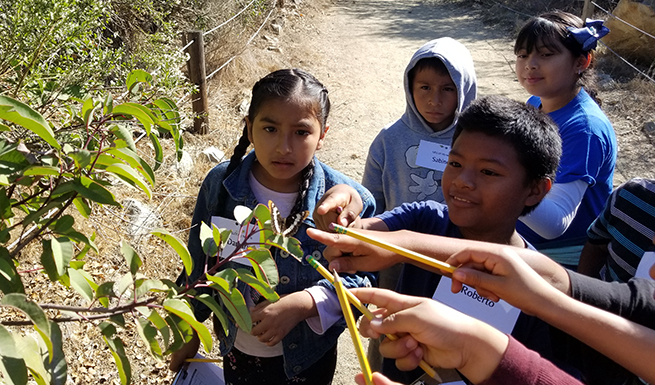The San Diego region’s beautiful, diverse landscape and temperate weather greatly contribute to residents’ quality of life. Due to a changing climate, however, the region is facing impacts, including increased temperatures, highly variable rainfall, more intense wildfires and rising sea levels that directly affect public health, such as:
- Extreme heat causing health issues
- Severe droughts and floods leading to water scarcity and flooded homes
- Wildfires destroying homes
- Sea level rise eroding and flooding coastal infrastructure
Climate change is also a “threat multiplier” for communities that face economic, social and environmental challenges, and past systemic racist practices like redlining that leave them with fewer resources to respond to climate disasters.
San Diego’s Climate Change Impacts
Similar to other regions, the communities in the San Diego region that are most vulnerable include the elderly, children, people of color and low-income individuals and families. This includes the San Diego Promise Zone, or urban communities that face a much lower quality of life. After being historically excluded, it is critical to center climate equity into climate change communications to ensure effective advocacy, policymaking and planning.
Highlighting the interconnectedness of people and the planet is essential when building climate change awareness and action. Stories – including how they’re shared – can help drive action and change at the individual, organizational and community levels.
Communication Matters
Communications plays a crucial role in ensuring the deep, transformative change needed to advance climate change solutions. It is strong public demand that “increases the likelihood that governments will prioritize climate change action.” Communications that build public and political will for climate action require awareness of the interconnections between people and impacts.
It is easy to become confused with the jargon and complexities of the science behind climate change, which distances people from the issue. The reality is that climate change directly affects everyone’s daily lives because they are part of the natural environment, no matter how urbanized the community.
Best practices in climate change communications include collaboration with different organizations. For the San Diego region, the Climate Education Partners (CEP) project developed communications resources such as the San Diego, 2050 is Calling report to educate high-profile decisionmakers, community leaders and the general public on local impacts due to the changing climate. CEP produced materials showcased leaders taking action to address these climate challenges and focused not only on the technical climate science but on individuals’ values, efficacy and how they identified with a community sharing climate change concerns. The most effective communications strategies have potential to influence behavioral change and promote actions that benefit our environment and communities.
A powerful tool to integrate into climate change communications includes tribal- and indigenous-based messaging. Seeing the world through an indigenous lens involves a holistic view that recognizes the relationships existing among all living systems. Rooted in interconnectedness and kincentric awareness, or the worldview where humans are closely related to other natural entities, indigenous knowledge offers great insight in restoring balance with the planet and climate justice. Western thought and science have historically dismissed indigenous ways, creating barriers that have prevented this knowledge from coming forward; these barriers should be challenged.
Philanthropy and Climate Change Communications
Philanthropy is needed to ensure advancements in climate change communications. Coordinated climate change philanthropy initially invested in goals that were near-term and had incremental policies, focused on the policymakers themselves rather than public will.
From 2008-2016, climate change communications was permanently shifted by these major factors:
- the politicization of the climate change issue, and
- the influence of digital communications on the media and information landscape.
Today, climate change impacts are being seen and felt, and this decade will determine what disastrous effects we can still prevent to our environmental and public health. Now more than ever, connecting people to climate change through communications is critical to advancing climate action.
Community-Driven Action in San Diego
As an overwhelming majority (84%) of San Diego County residents believe climate change is happening, it is a matter of mobilizing action and aligning the region’s climate efforts with larger-scale state, national and federal goals. San Diego has various regional climate organizations, community partners, networks and coalitions that overlap and collaborate on climate change issues, but an aligned communications strategy would provide stronger, more effective messaging.
The San Diego Foundation has invested in building communications capacity for regional climate organizations, such as the San Diego Green New Deal Alliance and San Diego Quality of Life Coalition, through funding Resource Media. Nonprofit organizations continue to benefit from these efforts that help build their capacity to activate their diverse stakeholders.
Effective climate change communications are critical for behavioral, systems and policy change. Climate communications activities and capacities are still largely underfunded despite providing a great opportunity to reach people on all levels and uplift their stories. The San Diego Foundation continues to invest in climate communications, ensuring nonprofit organizations are able to tell their stories of impact and action to advance larger-scale goals.
Since 2006, The San Diego Foundation Climate Initiative has provided leadership and philanthropic investment to create a more sustainable path towards economic growth and a higher quality of life for San Diegans. The Initiative advances science-based, collaborative development of local policies and programs that reduce our region’s polluting emissions and minimize local risks from climate change.




